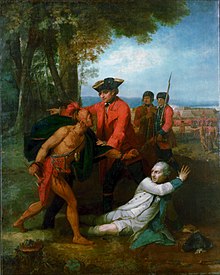
Provincial troops were military units raised by colonial governors and legislatures in British North America for extended operations during the French and Indian Wars. The provincial troops differed from the militia, in that they were a full-time military organization conducting extended operations. They differed from the regular British Army in that they were recruited only for one campaign season at the time. These forces were often recruited through a quota system applied to the militia. Officers were appointed by the provincial governments. During the eighteenth century militia service was increasingly seen as a prerogative of the social and economic well-established, while provincial troops came to be recruited from different and less deep-rooted members of the community.
The first provincial forces in British North America were organized in the 1670s. The major operations during King William's War were conducted by provincial troops from Massachusetts Bay. During Queen Anne's War provincial troops from Massachusetts Bay, Connecticut, and New Hampshire made up the bulk of the English forces. During King George's War the land forces that took Louisbourg were entirely supplied by Massachusetts, Connecticut, New Hampshire, and Rhode Island. During the French and Indian War the imperial government in London took an increasingly more leading part, relegating the provincial troops to a non-combat role, largely as pioneers and transportation troops, while the bulk of the fighting was done by the regular British Army. However the contributions of Connecticut, Massachusetts Bay, New Hampshire, and Rhode Island were essential.
© MMXXIII Rich X Search. We shall prevail. All rights reserved. Rich X Search
